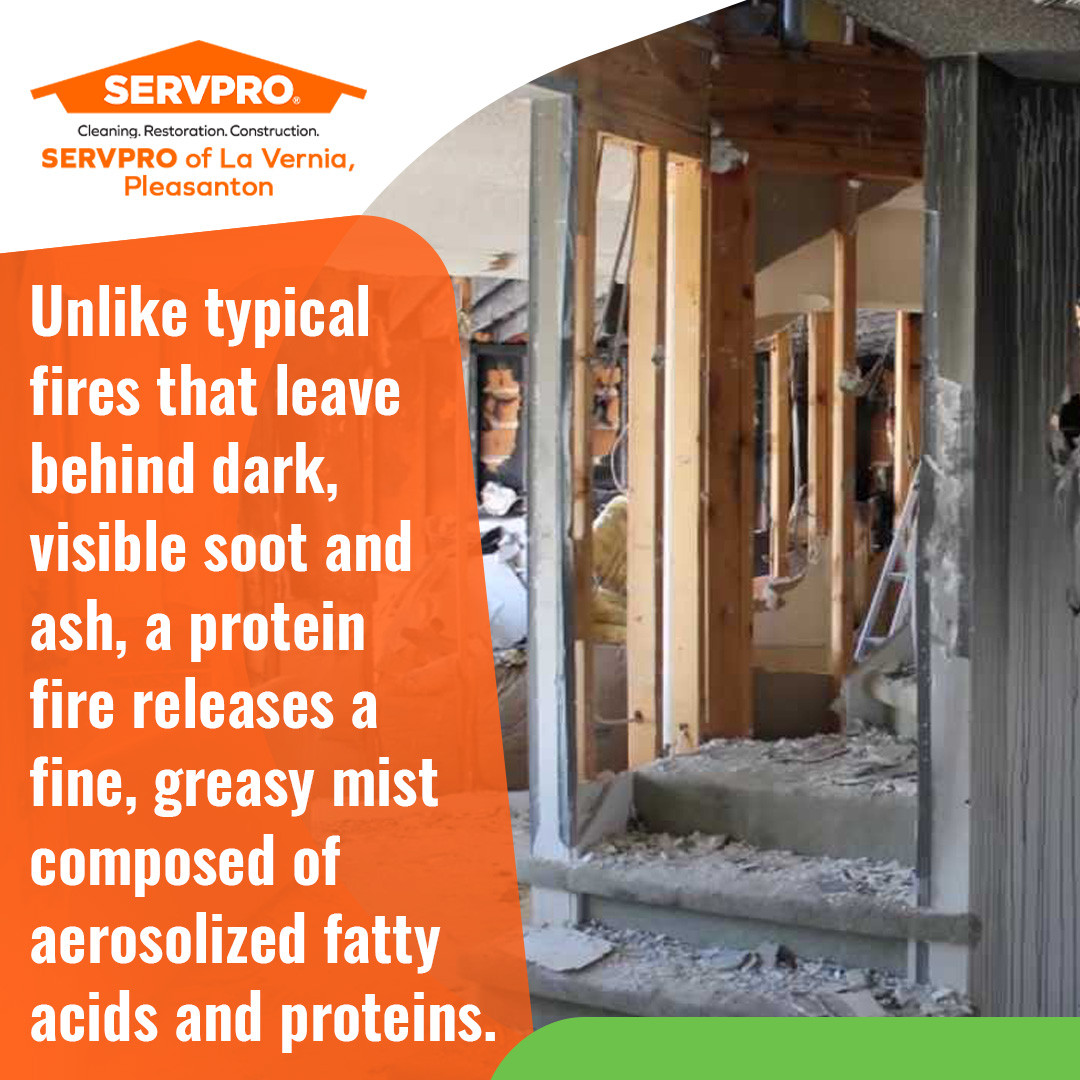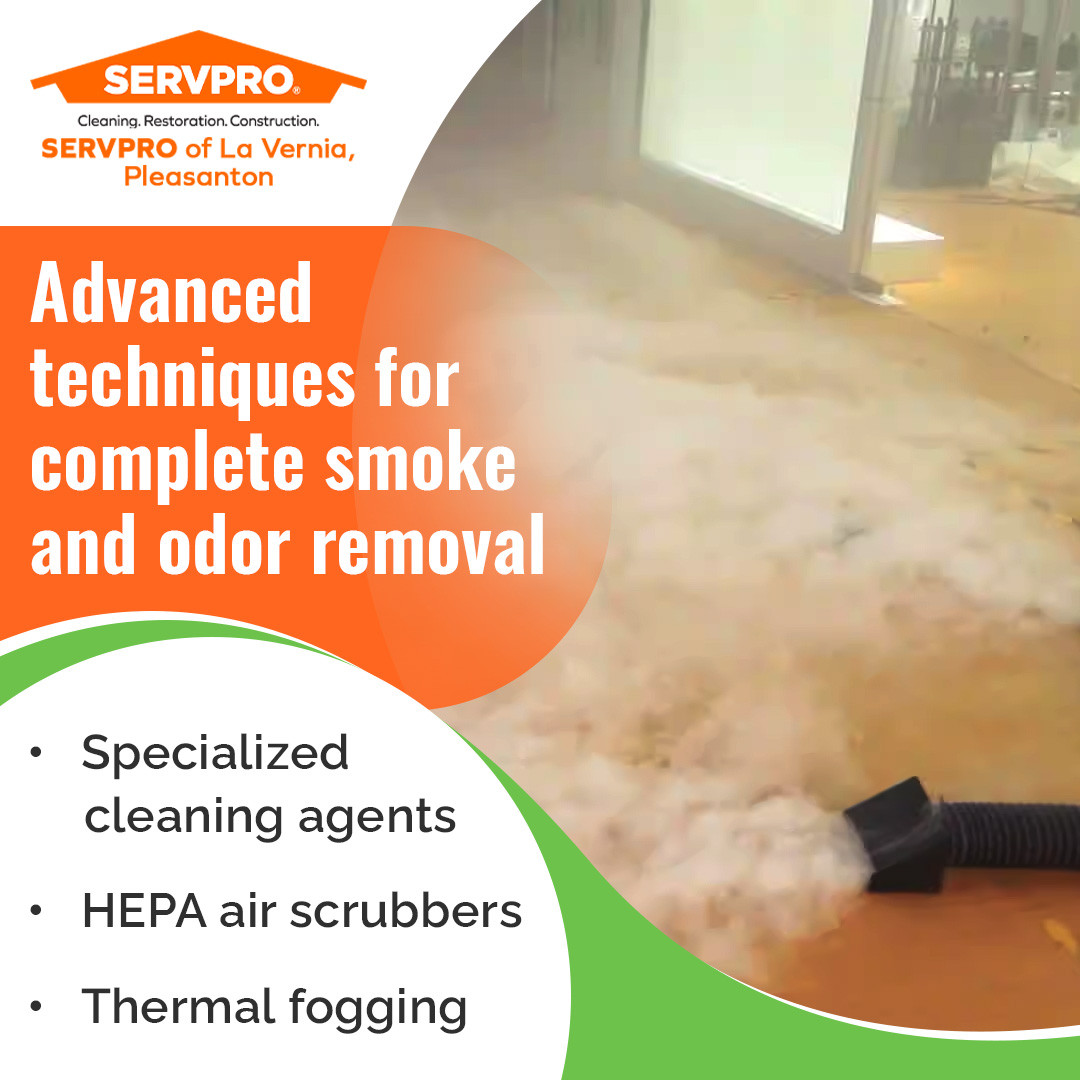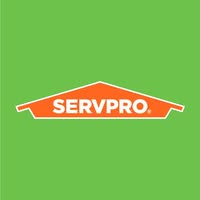After the kitchen fire: The invisible damage of protein fires and how to fix it
San Antonio, United States - August 15, 2025 / SERVPRO of La Vernia, Pleasanton /
San Antonio, TX — SERVPRO of La Vernia, Pleasanton is issuing a consumer advisory to homeowners in the Pleasanton area regarding the hidden and often underestimated damage caused by low-heat kitchen fires involving protein-rich foods. Commonly known as “protein fires,” these events are frequently caused by unattended cooking of items like meat, poultry, or beans. They produce a nearly invisible but highly corrosive and foul-smelling residue that standard household cleaning methods cannot remove. This advisory is intended as a public service to help residents avoid making costly mistakes in the aftermath of what may seem like a minor incident.
Unlike typical fires that leave behind dark, visible soot and ash, a protein fire releases a fine, greasy mist composed of aerosolized fatty acids and proteins. This mist travels with air currents and through a home’s HVAC system, settling on nearly every surface. While the immediate danger of flames is absent, the resulting damage is progressive and requires a specific professional response. The team at SERVPRO of La Vernia, Pleasanton has observed an increase in calls related to these misunderstood events.

The invisible residue and its corrosive effects
The primary challenge of a protein fire is the deceptive nature of the residue. It is often clear or has a faint yellowish tint, leading many homeowners to believe their property is clean after airing it out. However, this sticky, varnish-like film tenaciously bonds to walls, cabinets, countertops, and personal contents. Beyond being difficult to clean, the residue is acidic. If left in place, it can cause permanent damage, including the yellowing of white paint, the discoloration of varnish on wood cabinets, and the etching of finishes on some metal appliances. The sticky film also attracts household dust and dirt, creating a perpetually grimy surface that is difficult to maintain.
The pervasive odor: A sign of deeper contamination
The most immediate problem for residents is the powerful, rancid odor that a protein fire produces. The smell is not simply smoky; it is a bitter, acrid odor that worsens over time as the fatty acids in the residue oxidize. Because the smoke particles are often less than one micron in size, they penetrate deep into porous materials. This includes drywall, wood, upholstery, carpets, and even clothing inside closets. The only way to achieve effective soot and odor removal is to address the source by removing the residue from every affected surface, which is a cornerstone of professional fire damage restoration.
Professional intervention recommended for effective cleanup
Why standard cleaning methods are ineffective
A protein fire often makes the problem worse and more widespread. Using common water-based cleaners on this type of greasy residue is ineffective. It is chemically similar to trying to wash a greasy pan with just cold water; the residue gets smeared, not removed. This can embed the contamination deeper into surfaces, making the eventual professional cleanup more difficult. This situation requires specialized knowledge and products. The technicians at SERVPRO of La Vernia, Pleasanton are trained to identify the specific type of fire residue and apply the correct remediation process.
Advanced techniques for complete smoke and odor removal
Proper fire damage restoration for a protein fire involves a multi-step process using specialized technology. The company stresses that effective smoke removal goes far beyond surface cleaning and requires addressing both the physical residue and the airborne odor particles. The professional toolkit includes:
Specialized cleaning agents: Technicians use solvent-based cleaning solutions specifically formulated to break down and dissolve the protein and lipid residues without damaging the underlying surfaces.
HEPA air scrubbers: During the cleaning process, industrial air scrubbers are used to capture airborne particles and purify the air, preventing cross-contamination to unaffected areas of the home.
Thermal fogging: This is an essential technique for complete soot and odor removal. A deodorizing agent is heated and dispersed as a fine fog. The fog follows the same path as the original smoke, penetrating porous materials to neutralize odor molecules at their source.
For a complete and effective fire damage restoration after a kitchen fire, the company advises residents to contact a certified professional service that can correctly identify and treat the specific type of damage.

About SERVPRO of La Vernia, Pleasanton
SERVPRO of La Vernia, Pleasanton is a locally owned business providing professional cleaning and restoration services to the Pleasanton community. With a team of IICRC-certified technicians, the company specializes in fire, water, and mold damage, offering a 24/7 emergency response. Using industry-approved methods and advanced technology, SERVPRO of La Vernia, Pleasanton is equipped to handle the complexities of any restoration project, including specialized soot and odor removal. The company is committed to providing timely, reliable service to help residents and business owners recover after a disaster. Contact SERVPRO of La Vernia, Pleasanton at (830) 767-0500 or email them at office+2@servpro11423.com.

Contact Information:
SERVPRO of La Vernia, Pleasanton
2730 S Foster Rd
San Antonio, TX 78220
United States
Billy Maggard
(830) 767-0500
https://www.servpro.com/locations/tx/servpro-of-la-vernia-pleasanton

